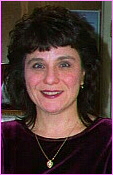
|
DR. LORETTA
KASPER'S ESL 91 ON THE WEB |

|

|
DR. LORETTA
KASPER'S ESL 91 ON THE WEB |

|
Linguistics: An Interdisciplinary Discipline
from Interdisciplinary English
© 1998, 1999--Loretta F. Kasper
Directions:Read the following text carefully. The underlined words that appear in blue are new vocabulary items. When you put your mouse over these words, you will see a box pop up with the definition of the word.After you have finished reading the text,
CLICK HERE
to answer the 10 comprehension questions. The questions will open in a NEW window. You will type your answers directly onto the computer screen. When you have finished, press the button that says "Submit your answers."
What is Linguistics? Linguistics is the scientific study of language. This study may focus on the sounds, the words, and the grammar of specific languages. It may focus on the relationships between individual languages or on the universal characteristics of all languages. The
discipline
of linguistics also involves the analysis of the sociological and psychological
aspects
of communication. Our sociological and psychological concerns often determine not only how we use language, but also the kind of language that we use. Because other disciplines have such an important place in the field of linguistics, linguistics is truly an interdisciplinary discipline. Is Knowing Linguistics the Same as Knowing a Language? Knowledge of linguistics is different from knowledge of a language. Consider the following
analogy
--Just as a person is able to drive a car without understanding how the engine works, so too can a speaker use a language without knowing anything about its internal structure.
Conversely,
a linguist can know and understand the internal structure of a particular language without actually speaking that language. Therefore, a linguist is not a person who speaks more than one language. Rather, a linguist is a person who studies language as a human phenomenon. This study may be theoretical or applied. Theoretical linguistics builds language models, or theories, to describe languages and their structures. Applied linguistics, on the other hand, uses the findings of theoretical linguistics to teach languages, to prepare dictionaries, or to provide
therapy
to people with language or speech disorders. There are many different ways to examine and describe individual languages and changes in languages. However, each way takes into account the sounds of the language (called phonetics/phonology), the sound sequences which make up words in the language (called morphology), and the relationships between words in a sentence (called syntax). Vocabulary and semantics (meaning) are also important language elements. The Interdisciplinary Nature of Linguistics Language is our primary means of communicating our thoughts, feelings, desires, and needs to others. Our use of language helps us to fit into and to find our place in society. Therefore, the psychological and sociological aspects of language use are important areas of study in the discipline of linguistics. These areas of study make up the subdisciplines of psycholinguistics and sociolinguistics. Psycholinguistics Psycholinguistics is the study of the relationship(s) between linguistic and psychological behavior. Psycholinguistis study how we
acquire,
or learn our first and second languages. They also study how we store and
retrieve
linguistic information. The storage and retrieval of linguistic information is called "verbal processing." Verbal processing involves the linguistic acts of speaking, listening, reading, and writing. Verbal processing includes both our own verbal
output
and our
reception
of the verbal output of other people. The verbal output of others serves as input to the brain cells responsible for our language behavior. Put simply, when we speak or write, we are producing verbal output; when we listen or read, we are receiving verbal input. To function in human society, we must be able to understand verbal input and also to produce
comprehensible
verbal output. This means that we must be able to understand other people, and they must be able to understand us. It is important for us to understand how verbal processing works. The better we understand how we process language, the easier it will be for us to develop effective ways to teach people languages and to help people with language
disabilities.
Sociolinguistics While the field of psycholinguistics studies how people use language to express and to meet their individual needs, the field of sociolinguistics studies the use of language in society. Sociolinguistics attempts to describe the human ability to use the rules of speech
appropriately
in different social situations. For example, a sociolinguist might be interested in studying how we know when it is proper to address a person as "Mrs.," "Ms.," "Mary," "Doctor," or "You." Sociolinguists are also interested in how and why people use different language forms in different situations. For example, when we are at home with friends or family, we may use more
colloquial,
or slang, expressions than we use when we are at work. Our pronunciation may also be more relaxed, and we may slur, or blend, words together without pronouncing each sound. However, we are usually much more careful about our speech at work. We try to follow the linguistic
conventions
which are suitable for our place of business. We concentrate more on our pronunciation and on the words we use. We do these things because we know that people often judge us by the way we use language. We know that use of
substandard
language may cause us to lose social standing in the community or in the group. We want to fit in, to belong, so we adapt our language use to the standard of the group we are with. Language use is a complex human behavior. The study of this language use, linguistics, is a wide-ranging field that is truly an interdisciplinary discipline.
Now go to the COMPREHENSION QUESTIONS.
Remember to type your answers directly into the form on the computer screen.